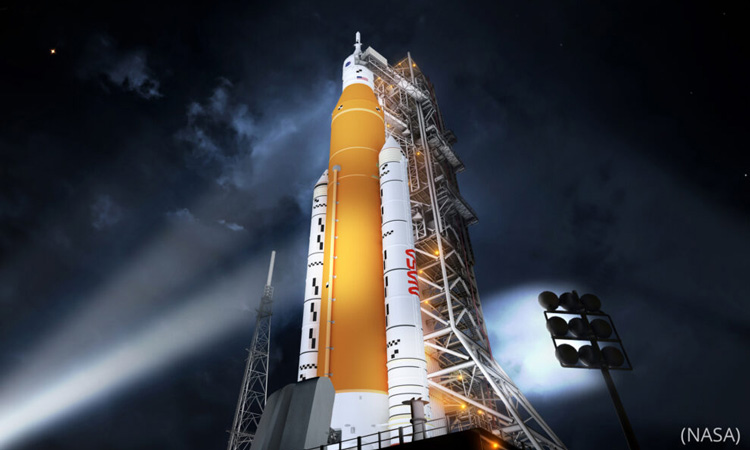
Artemis rocket launch called off due to fuel leak
A second attempt to launch the Artemis moon rocket was canceled today after the the massive spacecraft sprang a new fuel leak. According to the Associated Press, a two-week launch blackout period kicks in after Tuesday. This means that the rocket may be hauled off the pad and back into its hangar, which could push the flight into October.
Before NASA can send astronauts back to the moon, they need a successful test light of the Space Launch System (SLS), a giant rocket measuring 322 feet in height and weighing 5.5 million pounds when filled with propellants. If weather conditions allow, this massive rocket will start its journey to the moon – this time with no astronauts on board – on Monday, August 29, 2022 at 8:33 a.m. Eastern time, in a space mission called Artemis I.
SLS is the most powerful rocket NASA constructed since Saturn V took astronauts to the moon in the historical missions from the 1960s and 1970s. After lift-off, several events will occur in fast succession. Two minutes after leaving the ground, the two thinner side boosters attached to the rocket’s massive core stage will exhaust their solid rocket fuel and fall into the Atlantic Ocean, while eight minutes into flight, the four engines of the core stage will shut down, the stage will drop away, leaving the rocket’s second stage and the Orion capsule – which will carry astronauts in the future – to start their trek through outer space.
Approximately two hours after take-off, in a phenomenon called a “trans-lunar injection,” the second stage will fire again for about 18 minutes and will push Orion on a course to the moon, separating it from the second stage. On the sixth day, Orion will begin its orbit of the moon, and on the 24th day it will start its return trip to Earth.
“We’re going to stress it and test it. We’re going to make it do things that we would never do with a crew on it in order to try to make it as safe as possible,” said NASA administrator and former space shuttle astronaut Bill Nelson. If everything goes well, a second mission is scheduled for May 2024, carrying a team of four astronauts to the moon and back – the first such event since Apollo 17 reached the moon in December 1972.
“This is now the Artemis generation. We were in the Apollo generation. This is a new generation. This is a new type of astronaut,” Nelson added. “To all of us who gaze up at the moon, dreaming of the day humankind returns to the lunar surface … folks, we’re here.”
NASA Television’s online coverage of the Artemis I launch is set to begin at midnight as the process of filling the rocket’s propellant tanks starts, while the agency’s full coverage will begin at 6:30 a.m. on Monday.
Image Credit: NASA
—
By Andrei Ionescu, Earth.com Staff Writer













